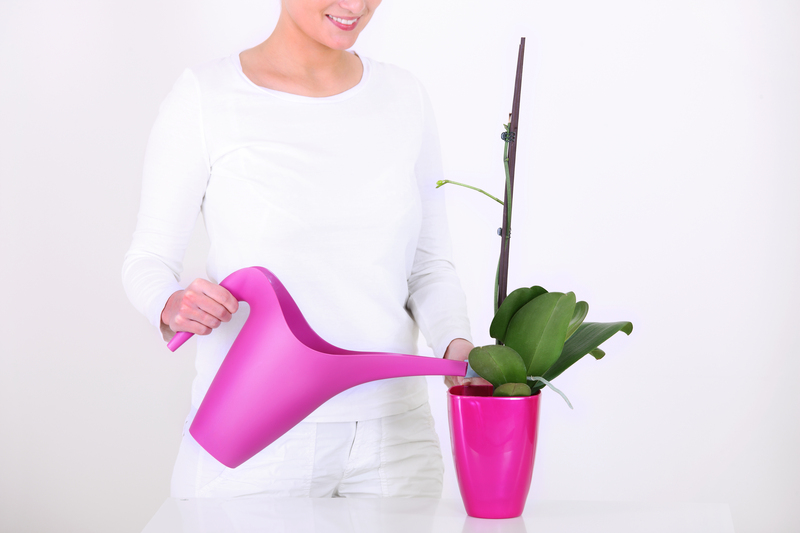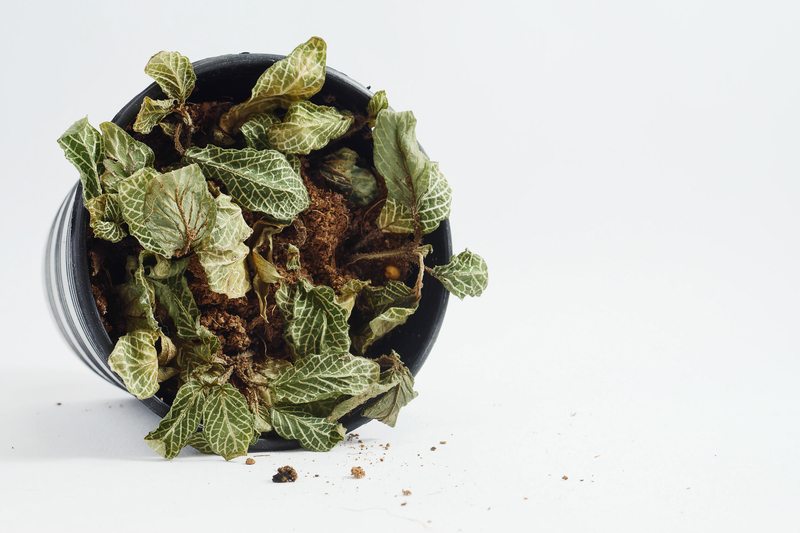Step-by-step guide to building your perfect herb garden
Posted on 24/06/2025
If you've ever dreamed of growing your own aromatic herb garden, you're not alone! With more people embracing home gardening, cultivating your own kitchen herbs has become a rewarding and fulfilling hobby. Whether you have a sprawling backyard or a modest balcony, this comprehensive guide will walk you through every step to create your perfect herb garden. Not only will you enjoy fresh flavors at your fingertips, but you'll also save money and elevate your home cooking. Let's dive in!
Why Grow Your Own Herb Garden?
- Freshness: There's nothing like snipping a few sprigs of basil or mint right when you need them.
- Cost-effective: Growing herbs at home is far more economical than regularly buying small bundles from the store.
- Variety: Explore diverse and unusual herbs often unavailable at supermarkets.
- Satisfaction: Witnessing your plants grow and thrive is deeply rewarding.
- Aesthetics and Aroma: Herbs add beauty and fragrance to your home or garden.
Choosing the Right Location for Your Herb Garden
The first step to growing a thriving herb garden is selecting an ideal location. Most culinary herbs flourish best with at least 6-8 hours of direct sunlight per day. Here's how to find the perfect spot:
- Outdoor Gardens: Select a south or west-facing section with well-draining soil.
- Containers or Pots: Balconies, patios, or even window sills work well if they get sufficient light.
- Indoors: Place herb pots on a sunny windowsill, preferably south-facing. Consider supplemental grow lights if natural light is limited.
Picking the Best Herbs to Grow
What makes your herb garden perfect is growing the herbs you use and enjoy the most. Here's a list of popular and beginner-friendly herbs to kickstart your garden:
- Basil: Ideal for salads, Italian dishes, and pesto.
- Mint: Refreshing in teas, cocktails, and desserts.
- Parsley: Versatile, used as a garnish or ingredient in many cuisines.
- Rosemary: Excellent for roasting meats and vegetables.
- Thyme: Adds depth to soups, sauces, and roasts.
- Cilantro: Essential in Mexican and Asian dishes.
- Sage: Flavorful in stuffing, sausages, and poultry.
- Chives: Mild onion flavor, great for salads and dips.
- Dill: Perfect for fish dishes and pickling.
- Oregano: A staple in Mediterranean cuisine.
Planning & Designing Your Herb Garden
When creating your dream herb garden, design matters! Consider the following points to maximize beauty and productivity:
- Garden Beds: Design rectangular or circular beds for easy access and visual appeal.
- Vertical Gardens: Use wall planters or hanging baskets if space is limited.
- Container Gardens: Ideal for patios, balconies, or indoors--move pots for best sunlight.
- Companion Planting: Group herbs with similar sunlight and water needs together.
- Pathways: Include stepping stones or mulch for easy maintenance.

Step 1: Preparing the Soil
Healthy soil is the foundation of your herb garden's success. Here's how to prepare it:
- Clear the Area: Remove weeds, rocks, and old plant material.
- Test the Soil: Herbs typically prefer well-draining soil with a pH between 6.0 and 7.5.
- Enrich: Add compost or organic matter to improve fertility and drainage.
- Loosen the Soil: Use a garden fork to break up compacted sections for better root growth.
Tip: For container herb gardens, always use high-quality potting soil formulated for vegetables and herbs.
Step 2: Selecting Containers or Creating Beds
Choose the right type of garden setup for your unique space:
- Garden Beds: Raised beds offer excellent drainage and easy maintenance.
- Containers: Ensure pots have drainage holes; use varying sizes for different herbs.
- Window Boxes: Great for keeping herbs close to the kitchen.
- Vertical Planters: Maximize space and create a lush green wall.
Consider mixing and matching containers for a visually pleasing and practical garden layout.
Step 3: Planting Your Herbs
You can start your herb garden from seeds or young seedlings (transplants). Each method has its own benefits:
- Seeds: Inexpensive and offer a greater selection of varieties.
- Seedlings: Provide a head start and are ideal for immediate results.
How to Plant Herbs from Seeds
- Read the Packet: Follow specific instructions for each herb (depth, spacing, sunlight requirements).
- Sow Indoors: Start seeds 6-8 weeks before the last expected frost if outdoors, or anytime indoors.
- Use Seed Trays: Fill with moist starter mix, sow seeds, and cover lightly.
- Maintain Moisture: Keep soil damp but not saturated until germination.
How to Plant Herb Seedlings
- Dig Holes: Make holes slightly larger than the root ball.
- Transplant: Gently remove the seedlings and plant at the same depth.
- Water In: Give each seedling a good drink after planting.
Step 4: Caring for Your Herb Garden
Consistent care will ensure your herb garden thrives for months or even years:
Watering
- Consistency: Water regularly, keeping soil moist but never waterlogged.
- Check Soil: Herbs like rosemary and thyme prefer slightly dry conditions; basil and parsley like more moisture.
- Morning Watering: Water early to allow leaves to dry, minimizing disease risk.
Fertilizing
- Moderation: Over-fertilizing leads to less flavor-rich herbs; feed them every 4-6 weeks with a balanced organic fertilizer.
Pruning and Harvesting
- Pinch Early: Pinch off the tips to encourage bushier growth.
- Regular Harvest: Snip leaves frequently to promote more growth.
- Avoid Flowering: Remove flower heads as they appear, as herbs lose flavor when they bolt (flower).
Step 5: Dealing with Pests and Diseases
A healthy herb garden isn't immune to challenges. Here's how to tackle the most common problems:
- Aphids and Whiteflies: Spray with a gentle stream of water or insecticidal soap.
- Slugs and Snails: Use copper tape, hand-pick, or sprinkle crushed eggshells around plants.
- Fungal Diseases: Minimize overhead watering, space plants for good airflow, and remove affected leaves promptly.
Tip: Most culinary herbs have natural pest-repellent properties - planting basil, rosemary, and mint together can help deter unwanted insects.
Step 6: Harvesting and Preserving Your Herbs
Best Practices for Harvesting
- Morning Harvest: Pick herbs in the morning when oils (and flavor!) are most concentrated.
- Use Sharp Scissors: Clean cuts encourage speedy regrowth.
- Only Take What You Need: Never remove more than 1/3 of a plant at once.
Preserving Your Herbs
- Drying: Bundle and hang in a cool, dark, well-ventilated area until crisp.
- Freezing: Chop and freeze leaves in ice cube trays with olive oil or water.
- Infusing: Steep herbs in vinegars, oils, or butters for delicious homemade flavors.
Special Herb Garden Ideas and Tips
Theme Gardens
- Pizza Garden: Grow basil, oregano, thyme, and parsley to flavor Italian dishes.
- Tea Garden: Plant mint, chamomile, and lemon balm for relaxing herbal teas.
- Medicinal Garden: Try calendula, echinacea, lavender, and sage for their natural remedies.
Maximize Your Space
- Grow Vertically: Use hanging baskets or vertical pots for small spaces.
- Interplanting: Mix herbs among vegetables and flowers for pest management and beauty.
- Succession Planting: Re-sow fast-growing herbs like cilantro and basil every few weeks for constant supply.

Common Herb Garden FAQs
How much sunlight do herbs need?
Most herbs require at least six hours of sunlight daily, though some like parsley and mint tolerate partial shade.
Can I grow herbs indoors?
Absolutely! Ensure a sunny windowsill or invest in grow lights for a thriving indoor herb garden. Rotate pots weekly for even growth.
Which herbs grow well together?
Mediterranean herbs (rosemary, thyme, oregano, sage) prefer dry soil and thrive together. Moisture-loving herbs like basil and parsley make good companions. Avoid planting mint with others as it can be invasive.
How often should I fertilize my herbs?
Once every 4-6 weeks with a balanced fertilizer is sufficient; avoid over-fertilizing for best flavor.
Conclusion: Enjoy Your Bountiful Herb Garden!
With the right planning, a little care, and the helpful step-by-step guidance above, you can nurture a lush and productive herb garden right at home. Within weeks, you'll enjoy the unmatched flavor of fresh-picked herbs in every meal and the satisfaction of growing your own food. Happy gardening!
Ready to start your herb gardening journey? Use this guide to plan, plant, and cultivate your perfect herb garden today--and savor a lifetime of fresh herbs at your fingertips.


